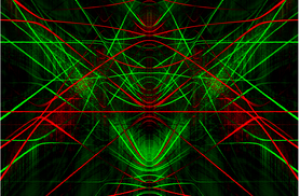
Optical and Spin Spectroscopy
Spectroscopy lies at the heart of fundamental research of light matter interactions. In our group we investigate the specotropic properties of rare-earth (RE) ions not just for quantum memory applications but to further our understanding of these systems and to discover new and interesting phenomena.

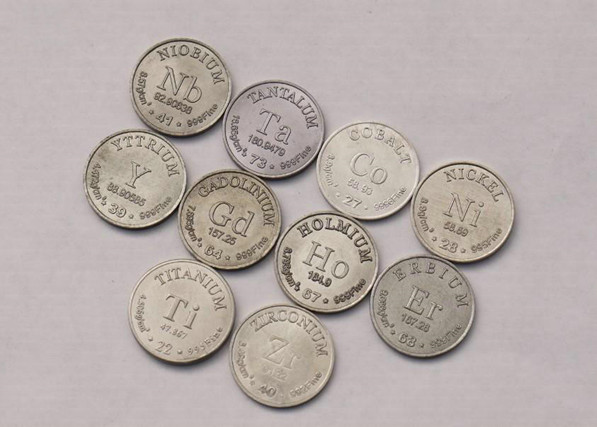
The RE ions we work with are doped into inorganic crystals. The concentration of the RE ions is usually very weak, around 1 to 1000 parts-per-million (ppm). The crystals we use are sometimes very famous laser crytals, as YAG or YVO4, but our favourite crystal is Y2SiO5, see photo below, because its constituents Y, Si and O have few isotopes with large nuclear spins. Thanks to this the spin and optical coherence times of RE ions are particularly long in this crystal.
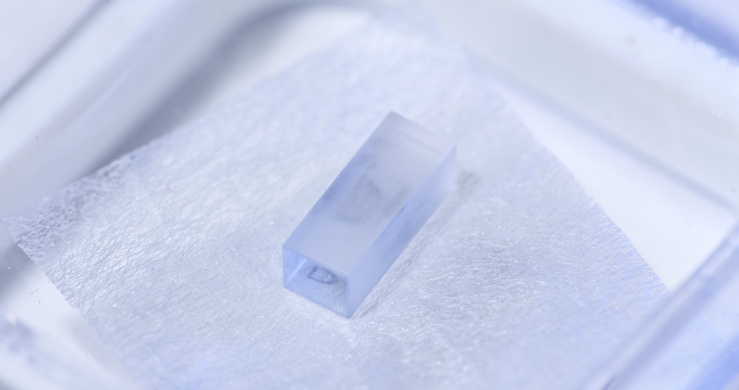
One thing that makes RE ions very special is that the optical transitions we exploit applications all take place in the 4f electronic shell around the nucleas. The 4f shell is located inside two outer shells that are filled with electrons, the 5s and 5p shells, as shown below. The outer 5s and 5p shells act like a Farady cage and shields the 4f electrons from the perturbations from the host ions in the crystal. But to exploit this unique property requires cooling RE crystals to about 4 K, which we do in all our quantum memory experiments. Today we use closed-cycle coolers that do not require any handling of liquid He, which is a good thing!
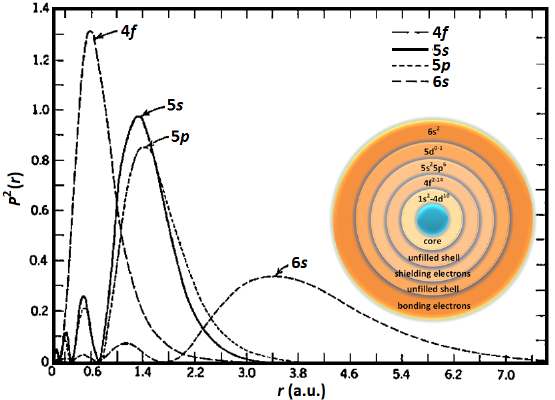
To explore the optical and spin properties of RE ions in crystals, we use a range of different spectroscopic techniques; spin and photon echoes, spectral hole burning, and absorption spectroscopy, among other things. A basic setup for probing both the spin properties using microwave excitation (MW), and the optical properties using lasers, is shown below.
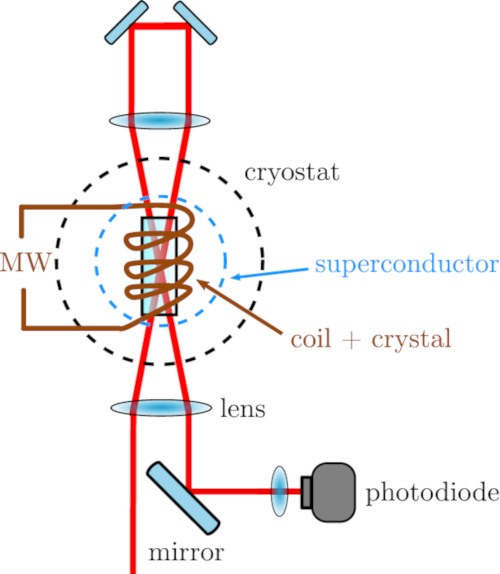
The spins are excited by the MW field created using the coil wrapped around the crystal, while simultaneously the laser excites the optical transition in the same RE ion.
With these tools one can explore and measure a wide range of interesting spectroscopic parameters. And sometimes these fundamental studies provide very surprising and exciting results, as when we recently discovered that 171Yb ions doped in to Y2SiO5 have exeptionally long optical and spin coherence times thanks to their natural "clock" transitions in this material (A. Ortu et al., Nature Materials). Now we have a new quantum memory project where we try to exploit these properties.
Fundamental material science is important to advance applied research !
Further Reading
Some of our key publications in optical and spin spectroscopy: (full publication list):
- ORTU, Antonio et al. Simultaneous coherence enhancement of optical and microwave transitions in solid-state electronic spins. In: Nature Materials, 2018, vol. 17, n° 8, p. 671-675. doi: 10.1038/s41563-018-0138-x
- ZAMBRINI CRUZEIRO, Emmanuel et al. Efficient optical pumping using hyperfine levels in 145Nd3+:Y2SiO5 and its application to optical storage. In: New Journal of Physics, 2018, vol. 20, n° 053013. doi: 10.1088/1367-2630/aabe3b
- LAPLANE, Cyril et al. High-Precision Measurement of the Dzyaloshinsky-Moriya Interaction between Two Rare-Earth Ions in a Solid. In: Physical Review Letters, 2016, vol. 117, n° 3, p. 037203. doi: 10.1103/PhysRevLett.117.037203
- ZAMBRINI CRUZEIRO, Emmanuel et al. Spectral hole lifetimes and spin population relaxation dynamics in neodymium-doped yttrium orthosilicate. In: Physical Review. B, Condensed Matter, 2016, vol. 95, n° 20, p. 205119. doi: 10.1103/PhysRevB.95.205119
